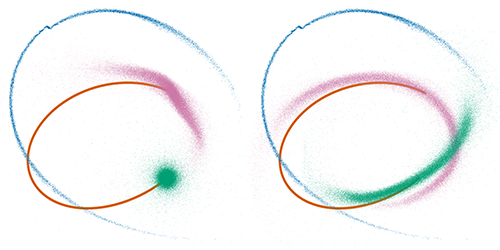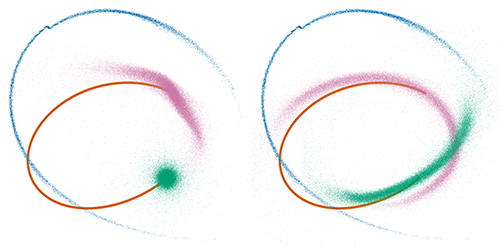Spotting Dark Matter Clumps
The distribution of dark matter predicted to surround many galaxies isn’t as smooth as suggested by the term halo. Instead, researchers believe that dark matter clumps together creating smaller structures, known as subhalos, within the larger halo. But observing these small features is challenging, as most are too small to contain any stars and so are hidden from sight. New predictions from Jo Bovy at the University of Toronto in Canada suggest that subhalos could be spotted by tracking the motion of streams of stars orbiting the Milky Way.
When a large galaxy and a stellar cluster come into close proximity, the galaxy can trap stars from the cluster in its orbit, stretching it out into one long thread. This thread, known as a stellar stream, then orbits the large galaxy. Similarly, any dark matter halo surrounding the large galaxy should also be stretched out creating a “dark stream.” According to Bovy, it could be possible to infer the presence of the dark matter stream from how it affects, through gravitational forces, the motion of the stellar stream and the position of the stars within it.
Bovy’s calculations indicate that very small dark matter structures could be spotted this way. Structures as small as solar masses could cause a measureable shift in a star’s position along its stream. By tracking the path of the stellar stream, the full orbital path of the dark matter stream and the location of its central dark matter clump could be mapped out. These clumps, if detected, could become the target of indirect searches aimed at measuring radiation released by dark matter annihilation.
This research is published in Physical Review Letters.
–Katherine Wright





